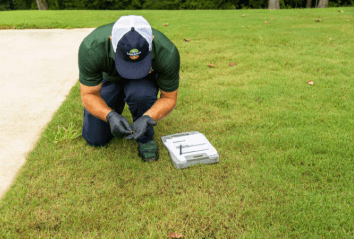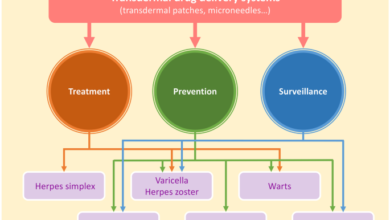Preventing Turf Disease: Essential Tips for a Healthy Lawn

Turf disease encompasses a range of ailments that can afflict lawns, often leading to unsightly patches, discoloration, and even the death of grass. These diseases are typically caused by pathogens such as fungi, bacteria, and viruses, which thrive under specific environmental conditions. For instance, fungal diseases like brown patch and dollar spot are particularly prevalent during warm, humid weather, while others, such as snow mold, emerge in cooler temperatures.
Understanding the life cycle of these pathogens is crucial for effective management. Many turf diseases can spread rapidly, especially in densely planted areas where air circulation is limited, creating an environment ripe for infection. Identifying the symptoms of turf disease is the first step in addressing the problem.
Common signs include irregular patches of dead or discolored grass, unusual growth patterns, and the presence of fungal structures like mycelium or spores. For example, brown patch manifests as circular brown areas surrounded by a darker green ring, while dollar spot appears as small, round patches that resemble coins. Recognizing these symptoms early can make a significant difference in treatment outcomes.
Moreover, understanding the specific conditions that favor disease development—such as excessive moisture, poor soil health, and inadequate sunlight—can help lawn care enthusiasts take proactive measures to prevent outbreaks.
Proper Lawn Maintenance
Proper lawn maintenance by yourself or experts like Hervey Bay turf supplies is essential for promoting healthy grass and preventing turf diseases. This involves a comprehensive approach that includes mowing, fertilization, aeration, and overseeding. Mowing should be done regularly and at the correct height for the specific grass variety; cutting too short can stress the grass and make it more susceptible to disease.
For instance, cool-season grasses like Kentucky bluegrass thrive when mowed to a height of 2.5 to 3 inches, while warm-season varieties like Bermuda grass prefer a height of 1 to 2 inches. Maintaining the appropriate height not only encourages robust growth but also helps shade the soil, reducing weed competition and moisture loss. Fertilization is another critical aspect of lawn care that directly impacts turf health.
A well-balanced fertilizer regimen tailored to the specific nutrient needs of the grass can enhance its resilience against diseases. Soil testing is recommended to determine nutrient deficiencies and pH levels before applying fertilizers. For example, nitrogen is vital for promoting lush green growth, while phosphorus supports root development.
However, over-fertilization can lead to excessive growth that may attract pests and increase disease susceptibility. Additionally, regular aeration helps alleviate soil compaction, allowing air, water, and nutrients to penetrate deeper into the root zone, fostering a healthier lawn ecosystem.
Monitoring Watering and Drainage
Watering practices play a pivotal role in maintaining a healthy lawn and preventing turf diseases. Overwatering can create a saturated environment that encourages fungal growth, while underwatering can stress the grass and weaken its defenses against pathogens. The key is to establish a consistent watering schedule that meets the needs of the grass without creating excess moisture.
Generally, lawns require about one inch of water per week, either from rainfall or irrigation. It is advisable to water deeply but infrequently to encourage deep root growth; this practice helps grass withstand periods of drought and reduces the likelihood of disease. In addition to proper watering techniques, effective drainage is crucial for preventing waterlogged conditions that foster disease development.
Poor drainage can lead to standing water on the lawn’s surface, creating an ideal breeding ground for pathogens. Homeowners should assess their lawn’s topography and make necessary adjustments to promote proper drainage. This may involve grading the soil to direct water away from low-lying areas or installing drainage systems such as French drains or dry wells.
Furthermore, incorporating organic matter into the soil can improve its structure and drainage capacity, enhancing overall lawn health.
Choosing the Right Grass Variety
Selecting the appropriate grass variety for a specific region and climate is fundamental to establishing a resilient lawn that can withstand diseases. Different grass types have varying tolerances to heat, drought, shade, and foot traffic; thus, understanding local conditions is essential for making an informed choice.
For instance, cool-season grasses like fescue and ryegrass thrive in northern climates with cooler temperatures and higher moisture levels, while warm-season grasses such as zoysia and Bermuda are better suited for southern regions with hotter summers.
In addition to climate considerations, it is important to evaluate the intended use of the lawn when selecting grass varieties. High-traffic areas such as ovals at schools in Bassendean may benefit from more durable grasses that can withstand wear and tear without succumbing to disease. For example, tall fescue is known for its drought resistance and ability to recover quickly from damage, making it an excellent choice for active lawns.
Conversely, if a lawn is primarily for aesthetic purposes or light use, finer-textured grasses like Kentucky bluegrass may be preferred for their lush appearance. By choosing the right grass variety tailored to specific environmental conditions and usage patterns, homeowners can significantly reduce the risk of turf diseases.
Implementing Integrated Pest Management
Integrated Pest Management (IPM) is a holistic approach that combines various strategies to manage pests and diseases while minimizing environmental impact. This method emphasizes prevention through cultural practices, monitoring pest populations, and using targeted interventions only when necessary. For instance, maintaining healthy soil through proper fertilization and aeration can create an environment less conducive to pest infestations and disease outbreaks.
Additionally, encouraging beneficial insects such as ladybugs and predatory mites can help control pest populations naturally. Regular monitoring is a cornerstone of IPM; this involves inspecting the lawn for signs of pests or diseases on a routine basis. Early detection allows for timely intervention before problems escalate.
Homeowners can utilize traps or visual inspections to assess pest populations and identify potential threats. When intervention is necessary, IPM promotes the use of least-toxic options first—such as organic pesticides or biological controls—before resorting to synthetic chemicals. This approach not only protects beneficial organisms but also reduces the risk of developing pesticide-resistant pest populations.
Seeking Professional Help
While many homeowners are capable of managing their lawns effectively through diligent care and attention, there are instances when seeking professional help becomes necessary. Lawn care specialists possess extensive knowledge about local turf diseases and their management strategies. They can conduct thorough assessments of lawn health and identify underlying issues that may not be immediately apparent to the untrained eye.
For example, professionals often have access to advanced diagnostic tools that can pinpoint specific pathogens affecting the turf. Moreover, professional lawn care services can provide tailored treatment plans based on individual lawn conditions and needs. This may include specialized fertilization programs, targeted pest control measures, or even soil amendments designed to improve overall health.
Engaging with experts not only saves time but also ensures that homeowners are employing best practices in lawn care management. Ultimately, investing in professional assistance can lead to a healthier lawn that thrives year-round while minimizing the risk of turf diseases that could otherwise compromise its beauty and vitality.






